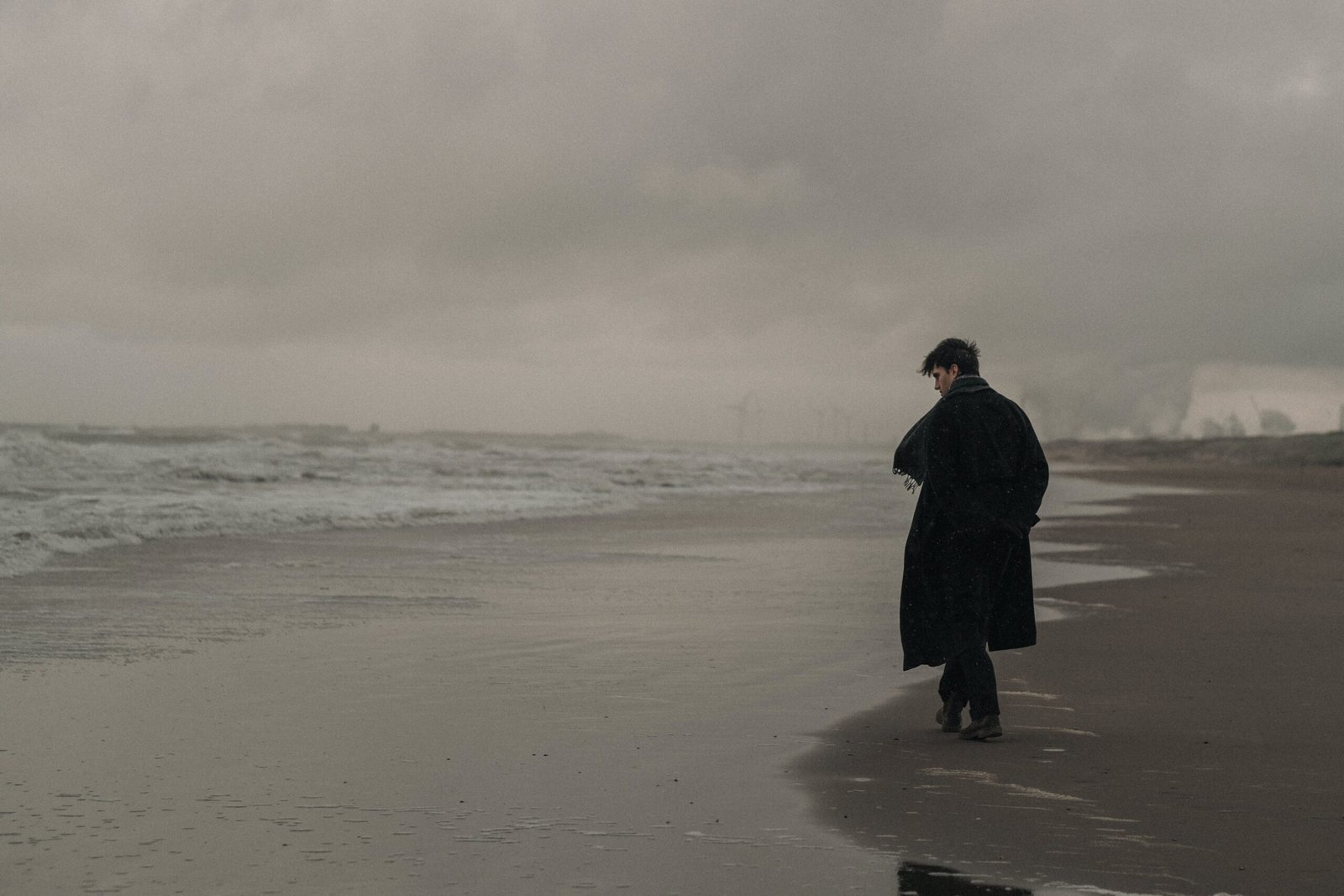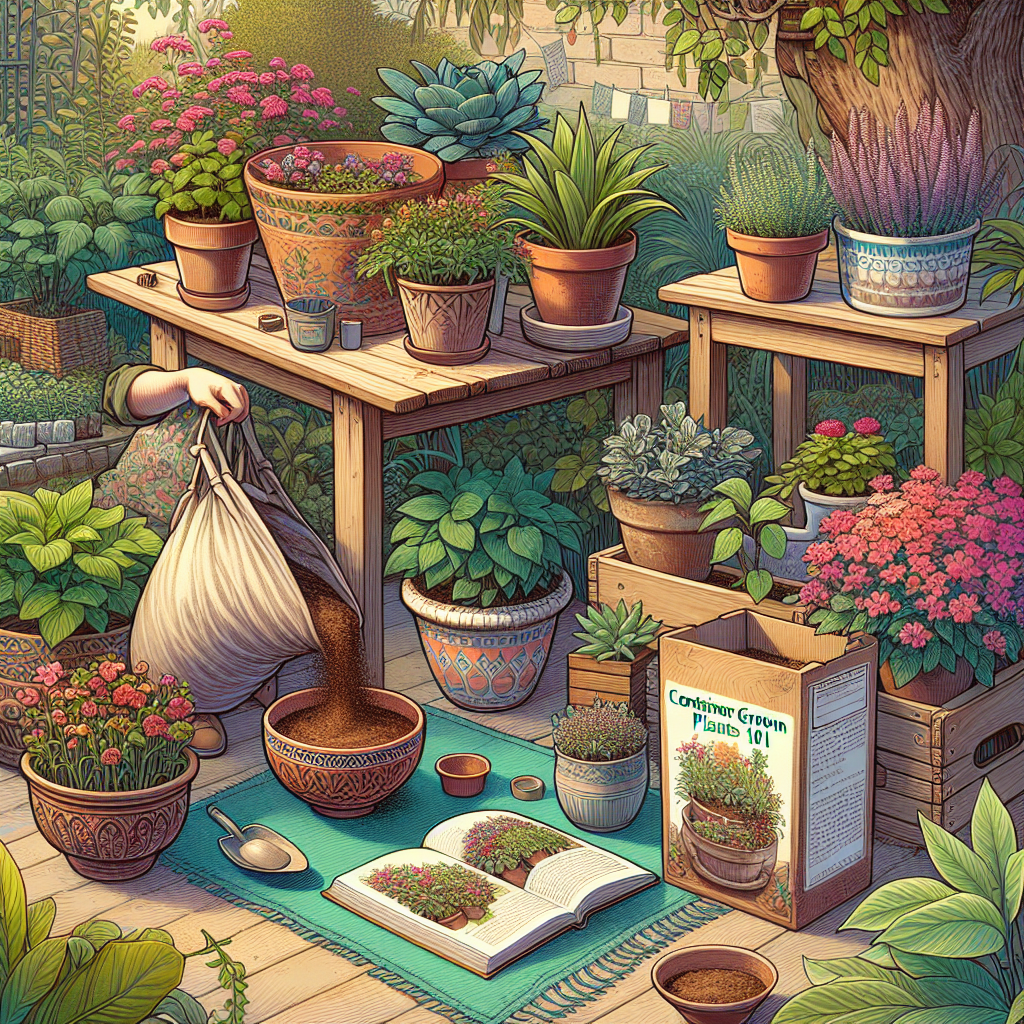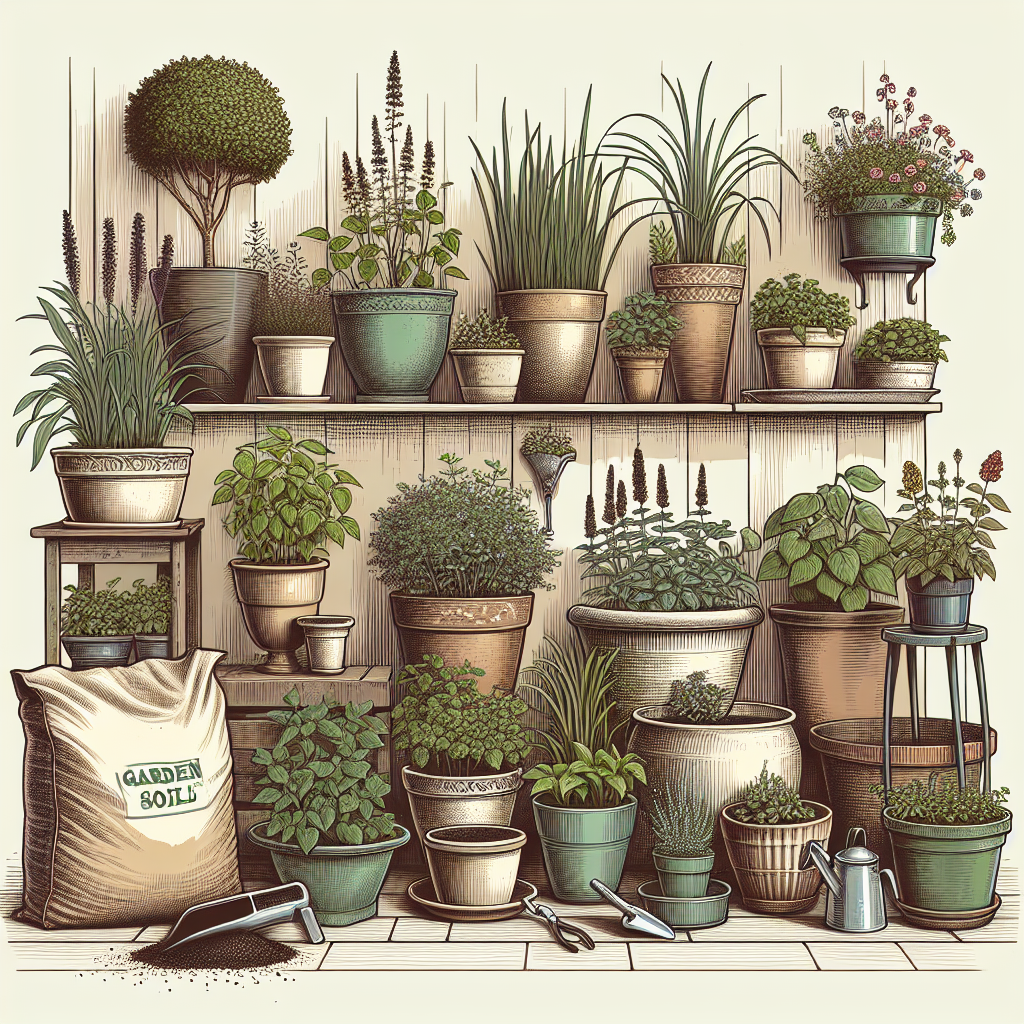
Container Grown Plants 101 is your ultimate guide to successfully growing plants in containers. Whether you have a green thumb or are just starting out, this article will provide you with essential tips and knowledge to help your plants thrive in a container environment. From choosing the right container and soil mix to watering and fertilizing techniques, you’ll learn everything you need to know for a bountiful and beautiful container garden. So, get ready to embark on a journey into the world of container gardening and watch as your plants flourish in their new container homes.
Basic Overview
Definition of Container Grown Plants
Container grown plants refer to plants that are cultivated and grown in containers, such as pots, planters, or containers made from various materials. This method of gardening allows individuals to grow plants in limited spaces, such as balconies, patios, or even indoors. Container gardening has gained popularity due to its versatility and the ability to create beautiful and functional gardens in any location.
Advantages of Container Gardening
Container gardening offers numerous advantages. Firstly, it provides flexibility, as containers can be moved easily, allowing you to decorate and personalize your space according to your preferences. Additionally, containers offer better control over soil quality and composition, as well as drainage, leading to healthier plants. It also minimizes weed growth, reduces the risk of soil-borne diseases, and allows for easier pest management. Furthermore, container gardening is accessible to individuals with limited mobility, as it eliminates the need for bending or kneeling, making it an inclusive form of gardening.
Disadvantages of Container Gardening
While container gardening offers a range of benefits, there are also some drawbacks to consider. Limited root space may restrict the growth potential of certain plants, resulting in smaller sizes or shorter lifespans. Containers require frequent watering as they dry out more quickly than plants in open ground. Additionally, the soil in containers can heat up more quickly, potentially causing stress to the plants during warmer seasons. It is also important to note that some vigorous plants may require larger and heavier containers, which can be challenging to move.
Selecting Containers
Types of Containers
When it comes to selecting containers for your plants, you have a variety of options. Some popular choices include clay or terracotta pots, plastic containers, wooden planters, fabric pots, and hanging baskets. Each type of container has its own set of characteristics, such as drainage capabilities, durability, and aesthetic appeal. Consider the needs of your plants, the style of your space, and your personal preferences when choosing containers.
Factors to Consider When Choosing Containers
Several factors should be taken into account when selecting containers for your plants. Consider the size of the plant and its root system, as well as the mature size of the plant, to ensure it has enough space for growth. Assess the drainage capabilities of the container to prevent waterlogging and root rot. Additionally, take into consideration the weight of the container, especially if you plan to move it frequently or place it on a balcony or rooftop. Finally, consider the aesthetic qualities of the container, choosing one that complements your overall garden design.
Proper Sizing of Containers
Choosing the right size of container is essential for the health and growth of your plants. If the container is too small, the roots may become cramped and hinder the plant’s development. On the other hand, an excessively large container can lead to water retention and poor drainage. As a general guideline, select a container that is approximately twice the size of the plant’s root ball, allowing ample space for root expansion while maintaining proper moisture balance.

Choosing the Right Soil
Importance of Soil in Container Gardening
Selecting the right soil is crucial for the success of container gardening. Unlike plants grown in open ground, container plants rely solely on the soil within the container for nutrients, water, and aeration. Good soil promotes healthy root development, nutrient absorption, and water retention. It should provide adequate drainage while retaining moisture without becoming waterlogged. By using a well-balanced soil, you can create the optimal environment for your plants’ growth.
Components of a Well-Draining Soil Mix
To create a well-draining soil mix for container plants, you will need a combination of different components. Start with a high-quality potting mix or soilless mix as the base. Avoid using garden soil, as it can be too heavy and may contain pests or diseases. To improve drainage, add organic matter such as compost or well-rotted manure. This will help loosen the soil and enhance its structure. Additionally, incorporating perlite or vermiculite can further improve aeration and prevent compaction.
Nutritional Considerations for Container Plants
Container plants require regular fertilization since nutrients in the soil are quickly depleted. Choose a slow-release fertilizer specifically formulated for container plants, as it will provide a consistent and gradual supply of nutrients over an extended period. Consider supplementing with liquid fertilizers during the growing season to ensure your plants receive the necessary nutrients for optimal growth. Regularly monitor your plants for signs of nutrient deficiencies and adjust your fertilization routine accordingly.
Plant Selection
Suitable Plants for Container Gardening
Container gardening offers a wide range of plant choices, from ornamental flowers to herbs, vegetables, and even small fruit trees. However, certain plants are more suitable for container cultivation due to their size, growth habit, and adaptability. Examples of plants suitable for containers include dwarf or compact varieties of flowering plants, compact vegetables, herbs, succulents, and small fruit-bearing shrubs. When selecting plants, consider the space available, the lighting conditions, and the specific requirements of each plant species.
Considerations for Different Plant Types
Different plant types have varying requirements, and it is important to consider these factors when selecting plants for your containers. Some plants may thrive in full sun, while others prefer partial shade. Pay attention to the preferred soil type and moisture levels indicated for each plant to ensure optimal growing conditions. In addition, consider the mature size and growth habit of the plant to avoid overcrowding the container and compromising the health and aesthetics of your garden.
Popular Choices for Container Plants
There is a myriad of plant options that thrive in containers and add beauty to any space. Some popular choices for container plants include petunias, geraniums, pansies, marigolds, herbs like basil and rosemary, cherry tomatoes, peppers, lettuce, and strawberries. These plants are known for their adaptability to containers, vibrant colors, and ability to thrive in various growing conditions. Consider experimenting with different plant combinations and mixtures to create eye-catching displays and enhance the aesthetic appeal of your container garden.

Watering and Drainage
Understanding Watering Needs of Container Plants
Proper watering is essential for the health and vitality of container plants. Container gardens tend to dry out faster than plants grown in open ground, so it is important to monitor the moisture levels regularly. Stick your finger or a moisture meter into the soil to determine when it is time for watering. Avoid overwatering, as it can lead to root rot and other issues. Instead, opt for deep, thorough soakings when the top inch of soil feels dry. The specific watering needs may vary depending on the plant species, container size, and environmental conditions.
Proper Drainage for Healthy Plants
Good drainage is imperative to prevent waterlogging and promote healthy root development. Ensure your containers have adequate drainage holes to allow excess water to escape. Elevate your containers slightly on pot feet or bricks to prevent them from sitting in standing water. Use a saucer or tray underneath the container to catch excess water and prevent water damage to surrounding surfaces. By ensuring proper drainage, you can minimize the risk of root rot and other water-related issues.
Watering Techniques for Containers
When watering container plants, it is recommended to use watering techniques that promote thorough hydration without causing water to accumulate on the surface. One effective method is to water slowly and deeply, allowing the water to penetrate the soil and reach the root zone. You can also consider using a drip irrigation system or a watering wand with a gentle spray to evenly distribute water. Mulching the surface of the soil with organic matter can help retain moisture and reduce water evaporation, particularly in hot and dry climates.
Fertilizing Container Plants
Importance of Fertilizer in Container Gardening
Fertilizing container plants is essential to ensure they receive an adequate supply of nutrients for healthy growth and optimum productivity. Unlike plants in open ground that can access soil nutrients, container plants rely on the nutrients provided through fertilization. Proper fertilization helps prevent nutrient deficiencies, promotes robust growth, enhances flowering and fruiting, and supports overall plant health. By meeting the nutritional needs of your container plants, you can maximize their potential and enjoy bountiful harvests or beautiful blooms.
Types of Fertilizers for Container Plants
There are different types of fertilizers available for container plants, each with its own advantages and application methods. Slow-release fertilizers are convenient as they release nutrients gradually over time, requiring fewer applications. Liquid fertilizers, such as soluble fertilizers or organic liquid fertilizers, provide a quick boost of nutrients and are easily absorbed by the plants. Organic fertilizers, such as compost or worm castings, promote soil health and long-term nutrient availability. Choose a fertilizer formulation that matches the requirements of your plants and follow the manufacturer’s instructions for application rates.
Fertilizing Schedule for Container Grown Plants
Establishing a fertilizing schedule is important to ensure consistent nutrient availability for your container plants. Start by fertilizing at the beginning of the growing season, following the recommendations provided for the specific fertilizer you are using. As a general guideline, fertilize every four to six weeks during the active growing season. Adjust the frequency and dosage based on the growth rate and needs of your plants. It is crucial not to over-fertilize, as this can lead to nutrient imbalances and plant burn. Regularly monitor your plants’ condition and adjust the fertilizing schedule as necessary.

Pest and Disease Management
Common Pests in Container Gardening
Despite your best efforts, container gardens may still be susceptible to pests. Common pests that can affect container-grown plants include aphids, spider mites, whiteflies, mealybugs, and snails. These pests can cause damage to the foliage, compromise plant health, and reduce productivity. Regularly inspect your plants for signs of pest infestations, such as wilting leaves, discolored spots, or visible insect activity. Early detection and prompt action can help prevent major infestations and minimize the damage caused.
Preventive Measures for Pest Control
Implementing preventive measures can help reduce the likelihood of pest infestations and ensure the health of your container plants. Start by choosing healthy plants from reputable sources, as they are less likely to carry pests. Maintain proper cultural practices, such as providing adequate sunlight, proper watering, and good air circulation, as healthy plants are more resistant to pests and diseases. Regularly clean and sanitize your containers to reduce the risk of pest eggs or larvae hiding in leftover debris. Additionally, consider using organic pest control methods, like neem oil or insecticidal soap, to treat minor infestations.
Identifying and Treating Common Plant Diseases
Container-grown plants can also be susceptible to various diseases, including fungal infections, bacterial diseases, and viral infections. Diseases such as powdery mildew, root rot, and leaf spot can negatively impact plant growth and vitality. To mitigate the risk of disease, practice proper cultural care, such as providing adequate ventilation and avoiding overwatering. Regularly inspect your plants for signs of disease, including discolored or spotted leaves, wilting, or unusual growth patterns. If a disease is identified, promptly remove and dispose of affected plant parts and consider using appropriate fungicides or treatments recommended for the specific disease.
Seasonal Care
Preparing Container Plants for Winter
As the colder months approach, it is important to prepare your container plants for winter to ensure their survival. Insulate your containers to protect the roots from freezing temperatures by wrapping them in bubble wrap or hessian. Group containers together to provide additional insulation and create a microclimate. Move tender plants indoors or to a sheltered location if necessary. Reduce watering frequency during winter to prevent waterlogging in the pots. Additionally, avoid fertilizing your plants during the dormant period to allow them to rest and conserve energy.
Care Tips for Summer
During the summer months, container plants require special care to thrive in the heat. Provide ample shade and protection from intense sunlight, especially during the hottest part of the day. Regularly water your plants as the increased heat and evaporation can quickly dry out the soil. Consider using mulch to retain moisture and reduce weed growth. It is important to fertilize your plants regularly during the growing season to meet their increased nutrient demands. Finally, monitor your container garden for signs of stress or pests and promptly address any issues that arise.
Transitioning Containers between Seasons
Transitioning container plants between seasons requires careful consideration and planning. Gradually acclimate your plants to changing environmental conditions by gradually increasing or decreasing their exposure to sunlight, temperature, and humidity. When transitioning plants from indoors to outdoors, expose them to outdoor conditions for a few hours each day, gradually increasing the duration. Conversely, when transitioning from outdoors to indoors, gradually reduce the exposure to outdoor conditions. Regularly monitor your plants during this transition period and make adjustments as necessary to prevent shock or stress.

Maintaining Container Plants
Pruning and Trimming
Regular pruning and trimming are essential for maintaining the health, shape, and appearance of your container plants. Remove dead or diseased foliage as soon as you notice it to prevent the spread of diseases. Thin out overcrowded plants to improve airflow and reduce the risk of pests and diseases. Additionally, prune plants to maintain their desired shape and promote bushier growth. Use clean and sharp pruning shears or scissors, and sanitize them between plants to prevent the spread of pathogens.
Transplanting Container Plants
Transplanting container plants is occasionally necessary to provide them with more space or refresh the soil. When transplanting, carefully remove the plant from its current container, taking care not to damage the roots. Place the plant in a new, appropriately sized container filled with fresh soil. Ensure the plant is at the same depth as it was in the previous container, and gently firm the soil around the roots. Water the plant thoroughly after transplanting to help settle the soil and reduce transplant shock. Monitor the plant closely for a few weeks to ensure successful establishment.
Refreshing Soil and Root Pruning
Over time, the soil in containers can become compacted, depleted of nutrients, and have poor drainage. Refreshing the soil periodically is important to maintain ideal growing conditions for your plants. Remove the top layer of soil and replace it with fresh potting mix or soilless mix. This will help replenish nutrients and improve drainage. If the roots of your plant have become root-bound, root pruning can be beneficial. Gently tease out the roots from the root ball and trim them, promoting healthy root growth and preventing the plant from becoming pot-bound.
Creative Container Gardening
Choosing Ornamental Containers
Container gardening provides an opportunity to showcase your creativity through the choice of ornamental containers. Explore different materials such as colorful ceramic pots, rustic wooden planters, or modern metal containers. Consider the overall design theme of your space and choose containers that complement the style. Experiment with different sizes, shapes, and textures to create visual interest and unique focal points. Don’t be afraid to mix and match containers to add a playful touch to your container garden.
Combining Plants for Aesthetics
One of the joys of container gardening is the ability to combine different plants for stunning aesthetics. Create visually appealing combinations by selecting plants with varying heights, foliage textures, and flower colors. Consider the concept of thrillers, fillers, and spillers when choosing plants. Thrillers provide vertical interest and can be taller plants or those with architectural features. Fillers add volume and fill out the container, while spillers cascade and trail over the edges. Experiment with different plant combinations and arrangements to create a harmonious and visually striking container garden.
Vertical Gardening in Containers
Vertical gardening in containers offers a unique and space-saving way to grow plants. Utilize trellises, stakes, or vertical planters to provide support for climbing or trailing plants. Vertical gardening allows you to maximize the use of vertical space, making it ideal for small balconies, patios, or walls. Choose vining plants such as ivy, morning glories, or climbing roses to create a lush and vibrant vertical garden. Additionally, consider using hanging baskets or living walls to add vertical interest and create a stunning display of cascading plants.
Container gardening opens up a world of possibilities for individuals with limited space or those looking to enhance their outdoor or indoor living areas. By understanding the basics of container gardening, selecting the right containers and soil, choosing suitable plants, and providing proper care, you can create a thriving and beautiful container garden that brings joy and relaxation to your life. So grab your gardening gloves, select your favorite containers, and get ready to embark on a rewarding journey of container gardening.






